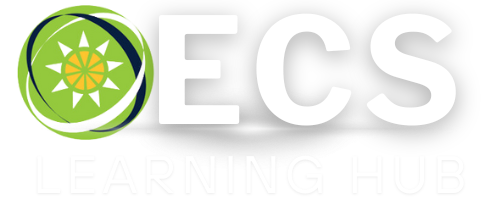Shape Detectives
Overview
In this activity, students become "shape detectives" as they identify and classify 2D and 3D shapes in their environment. They will explore the attributes of various shapes, create shape-based art, and develop geometric vocabulary through hands-on investigation and creative expression.
Students will hunt for shapes around the classroom and school, analyze their properties, and use their findings to create artistic compositions. This activity connects geometry to the real world while developing spatial reasoning and classification skills.
Learning Objectives
- Identify and name 2D shapes: circle, square, rectangle, triangle, hexagon, pentagon
- Identify and name 3D shapes: cube, sphere, cylinder, cone, rectangular prism
- Describe attributes of shapes (sides, corners, faces, edges, vertices)
- Classify shapes based on their properties
- Recognize shapes in different orientations and sizes
- Create artistic compositions using geometric shapes
- Use geometric vocabulary accurately in discussions
Materials
- Shape identification cards (2D and 3D shapes)
- Clipboards and pencils
- Shape detective recording sheets
- Digital cameras or tablets (optional)
- Geometric shape manipulatives
- Construction paper in various colors
- Scissors and glue sticks
- Shape templates and stencils
- Magnifying glasses (for fun detective work)
- Chart paper for class findings
- Markers and crayons
Preparation
- Create shape identification reference cards for student use
- Prepare detective recording sheets with shape categories
- Set up art station with construction paper and supplies
- Identify good locations for shape hunting (classroom, hallway, playground)
- Gather various 3D shape manipulatives for hands-on exploration
- Create vocabulary word wall with shape names and attributes
- Prepare example shape art to inspire student creativity
Steps
- Shape Review and Introduction (8 minutes):
- Review 2D and 3D shapes using manipulatives and shape cards
- Practice naming shapes and describing their attributes
- Introduce detective vocabulary: investigate, classify, attributes, properties
- Show examples of shapes found in the environment
- Explain the shape detective mission and recording process
- Shape Hunt Investigation (15 minutes):
- Students work in pairs with clipboards and recording sheets
- Hunt for shapes in designated areas (classroom, hallway, library)
- Record findings by drawing or writing location of each shape
- Take photos of interesting shape discoveries (if cameras available)
- Encourage looking at objects from different angles
- Teacher circulates asking guiding questions about shape attributes
- Data Analysis and Sharing (7 minutes):
- Pairs return to share their most interesting discoveries
- Create a class chart organizing findings by shape type
- Discuss which shapes were most/least common in the environment
- Compare different examples of the same shape
- Introduce concept that shapes can be different sizes but same type
- Shape Art Creation (10 minutes):
- Students create artistic compositions using cut-out shapes
- Provide various colored paper and shape templates
- Encourage creativity: animals, buildings, abstract designs
- Students must use at least 5 different shapes in their artwork
- Label each shape used in the composition
- Share artwork and describe the shapes used
Differentiation
For Students Who Need Support:
- Focus on basic shapes: circle, square, rectangle, triangle
- Provide shape reference cards to carry during hunt
- Use pre-cut shapes for art activity
- Work with a supportive partner or adult volunteer
- Allow verbal descriptions instead of written recording
- Start with obvious, large examples of shapes
For Students Who Need Challenge:
- Include more complex shapes: pentagon, hexagon, octagon
- Identify shapes within shapes (composite figures)
- Measure and compare attributes (count sides, angles)
- Create 3D art using boxes and cylinders
- Research why certain shapes are used in architecture
- Design their own shape hunt for other classes
Assessment
Observe students during the activity and look for:
- Accurate identification and naming of 2D and 3D shapes
- Appropriate use of geometric vocabulary
- Ability to describe shape attributes (sides, corners, faces)
- Recognition of shapes in various orientations and contexts
- Systematic recording and organization of findings
- Creative and accurate use of shapes in art compositions
- Collaborative skills during partner work
Collect recording sheets and artwork to assess understanding. Use a simple checklist to track which shapes each student can identify and name correctly.
Extensions
- Create a classroom shape museum with labeled examples and descriptions
- Take shape hunt field trips to local buildings, parks, or museums
- Use technology to create digital shape collages or presentations
- Explore cultural art forms that feature geometric patterns
- Build 3D structures using various geometric solids
- Create shape riddles for other students to solve
- Connect to architecture by studying famous buildings and their shapes
- Plant a garden using geometric patterns and shapes
Curriculum Connections
Geometry:
2D and 3D shape identification and classification
Art:
Creating compositions using geometric elements
Language Arts:
Descriptive vocabulary and communication skills
Teacher Tips
- Create a shape word wall with visual references
- Use consistent language when describing shape attributes
- Encourage students to use hands to trace shape outlines
- Connect shapes to familiar objects (ball = sphere, box = cube)
- Display student artwork to celebrate geometric creativity
- Take photos of shape discoveries for future reference
